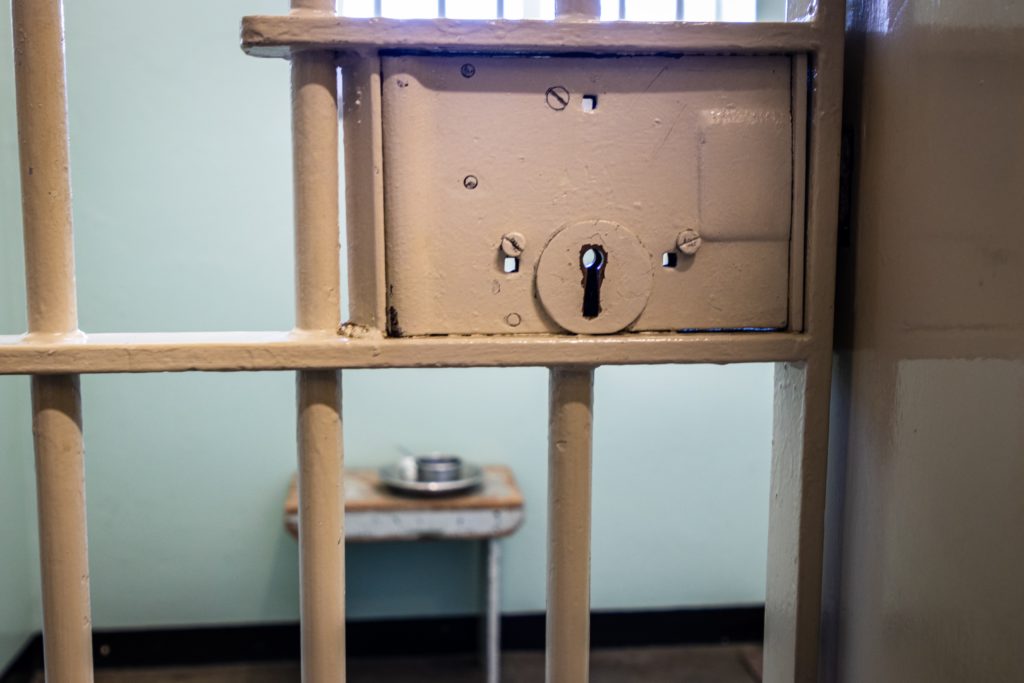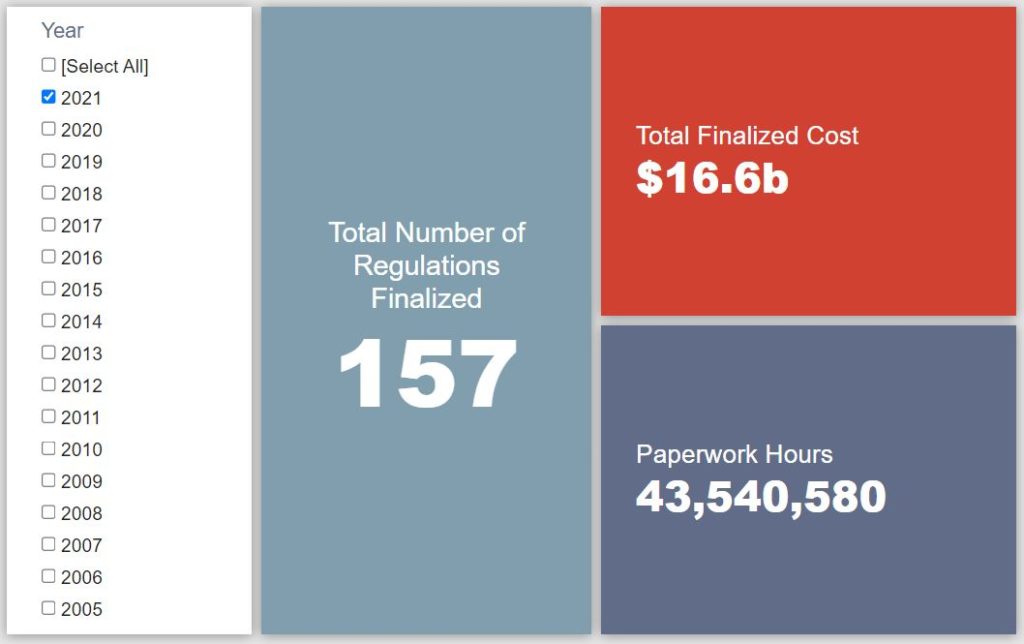Week in Regulation
August 2, 2021
End of July Brings End of Trump-Era Labor Rule
Last week was yet another week where one rule towered above the rest in terms of significance. Six out of the seven rules with some quantifiable impact combined for a grand total of $10.5 million in total costs. A Department of Labor (DOL) rule officially striking down another Trump-era rule provided the bulk of costs beyond that – as well as a notable shift in labor policy from the prior administration. Across all rulemakings, agencies published roughly $71.4 million in total net costs and added 27,752 paperwork burden hours.
REGULATORY TOPLINES
- Proposed Rules: 70
- Final Rules: 63
- 2021 Total Pages: 41,311
- 2021 Final Rule Costs: $16.6 billion
- 2021 Proposed Rule Costs: -$13.3 billion
NOTABLE REGULATORY ACTIONS
The most consequential rulemaking of the week was DOL’s final rule regarding “Rescission of Joint Employer Status Under the Fair Labor Standards Act Rule.” As the title suggests, this rule formally rescinds a prior DOL rule on the subject. In this case it was a January 2020 rule from the Trump Administration that sought to update the definition of “joint employer” for the purposes of determining whether aspects of the Fair Labor Standards Act applied to certain employees. In terms of quantified impacts, DOL estimates that the main effect will be (on average) roughly $60 million in total regulatory familiarization costs. Beyond those costs, however, this broad shift in policy could result in greater legal liability for certain types of companies and employers, such as those that operate primarily on a franchise model.
TRACKING THE ADMINISTRATIONS
As we have already seen from executive orders and memos, the Biden Administration will surely provide plenty of contrasts with the Trump Administration on the regulatory front. And while there is a general expectation that the new administration will seek to broadly restore Obama-esque regulatory actions, there will also be areas where it charts its own course. Since the AAF RegRodeo data extend back to 2005, it is possible to provide weekly updates on how the top-level trends of President Biden’s regulatory record track with those of his two most recent predecessors. The following table provides the cumulative totals of final rules containing some quantified economic impact from each administration through this point in their respective terms.
![]()
Outside of the costs involved in implementing the aforementioned joint employer rule rescission, there was not much movement across any of the three administrations covered here. The most significant came from the Obama Administration in the form of a Department of Transportation rule on “Requirements and Procedures for Consumer Assistance To Recycle and Save Program” that yielded a net increase in annual paperwork of nearly 170,000 hours.
THIS WEEK’S REGULATORY PICTURE
This week, the Federal Communications Commission (FCC) lowers certain phone call charges for prisoners.
 Photo by Grant Durr on Unsplash
Photo by Grant Durr on Unsplash
On July 28, the FCC published a final rule in the Federal Register that reduces the rates prisoners may be charged for interstate and international phone calls. The FCC unanimously approved the rule during its May 20 meeting.
Because of limits to the FCC’s jurisdiction, the rule only applies to interstate and international calls. It does not affect rates paid on in-state calls.
The rule lowers the rate cap on interstate calls from 21 cents per minute to 12 cents for prisons and 14 cents for large jails. It also establishes a cap on international rates for the first time, setting the limit at the interstate cap plus “the amount paid by the calling services provider to its underlying wholesale carriers for completing international calls.”
According to the FCC final order establishing the rule, setting lower caps was important because studies show that inmates that stay in regular contact with family have lower recidivism rates. Inmates have long been charged high rates because providers of prison phone services have a monopoly in each facility, so there are no incentives to keep rates low.
The FCC simultaneously published a proposed rule seeking further information from the public on how it can “make further progress toward ensuring that the rates, charges, and practices for and in connection with interstate and international inmate calling services meet applicable statutory standards.”
The rate changes go into effect on October 26, 2021.
TOTAL BURDENS
Since January 1, the federal government has published $3.3 billion in total net costs (with $16.6 billion in new costs from finalized rules) and 31.9 million hours of net annual paperwork burden increases (with 43.5 million hours in increases from final rules).












